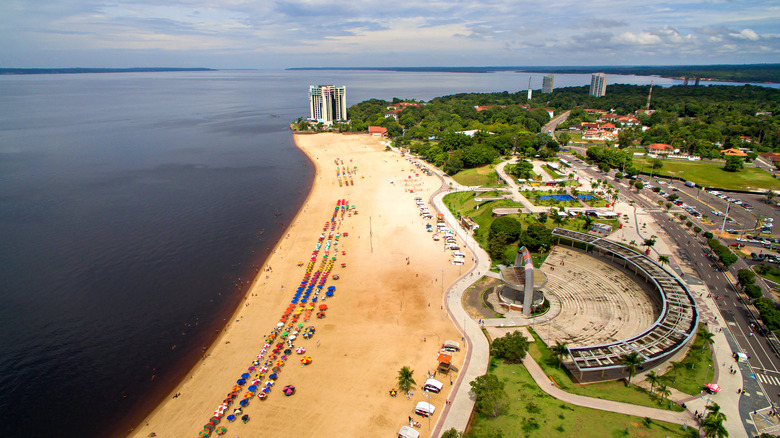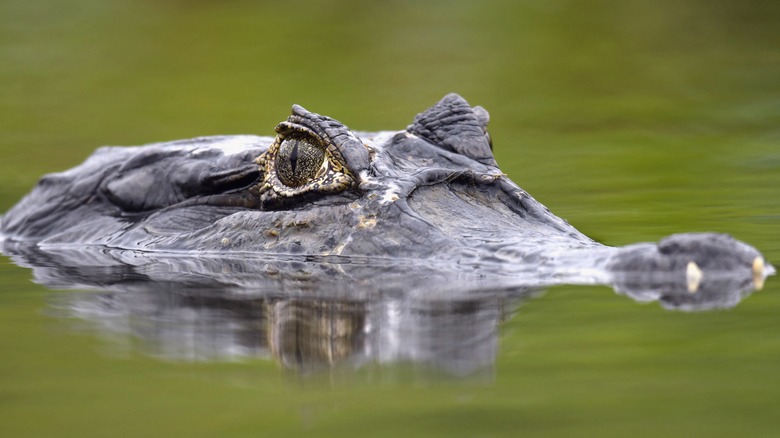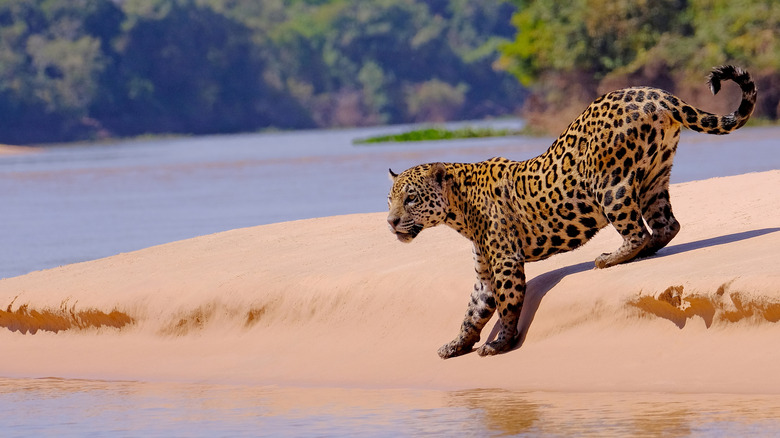These South American Beaches Are One Of The Deadliest Tourist Spots In The World
While many people have heard of the mighty Amazon River, few know that it has several beaches scattered along it that could harbor deadly inhabitants. According to Travel Triangle, the Amazon River beaches are in the top "10 most dangerous beaches in the world." This is because lurking beneath the water are some of the Amazon rainforest's most dangerous animals. Even some of the land species have the ability to swim and will get in the river if they need to.
Some of the best of these beaches are gathered around Brazil's Manaus, the Amazon's largest city. The most popular among them as rated by reviews on Tripadvisor are Ponta Negra Beach, Praia do Tupe, Praia da Lua, Japonês Beach, and Ponta das Lajes Beach. Swimming around these beaches are electric eels, piranhas, anacondas, and caiman, so it is vital to understand how to be safe around these creatures before you venture into the water.
The Amazon River's most dangerous aquatic species
While myths of "penis fish" that can enter your body via the urethra and piranhas that will bite into your flesh abound, bigger predators that can swim and eels that can potentially electrocute you are more of a worry. One Amazon animal that will attack people on occasion is the black caiman, considered by the Encyclopedia Britannica to be one of the most dangerous Crocodilian species. There were 43 black caiman attacks on people between 2008 to 2013, a few of which were fatal according to the figures reported by the now defunct worldwide crocodilian attack database, according to The Conversation.
The most powerful electric eel in the world was discovered in the Amazon in 2019 and named "electrophorus voltai," by researchers. Electric eels can also hunt in packs to deliver stronger shocks so scientists recommend keeping away if you see more than one together. Even though jaguars are big cats, they are good swimmers who often take to the water and their powerful bite means that they can tackle large mammals if they need to. However, there is no need to worry as there are things you can do to avoid negative interaction with this region's wonderful wildlife.
How to stay safe on the Amazon River beaches
The most obvious way to stay safe is to stay on the beach and not go into the water at all. However, if you really want to get wet, it may be sensible to pick your time to venture into the river, as caimans are most active at night. It's important not to go into the Amazon at all after dark, as there may be hazards that you can't see, and apex predators like the jaguar venture down to the water to drink once the sun starts to set.
When you do see wildlife, it's important to keep your distance and avoid provoking it. A fishing guide in Brazil was bitten by an anaconda after he tried to film it with his phone, as reported in The New York Post. It is also advisable to supervise children at all times and avoid letting them go into the river as their diminutive size means they are more of a target for predators. Speaking to local people or guides is your best defense against animal attacks as they are familiar with their behavior and where they like to hunt. By listening to them and following these tips, your trip along the Amazon River to see its tranquil beaches will be a memorable one for all of the right reasons.


